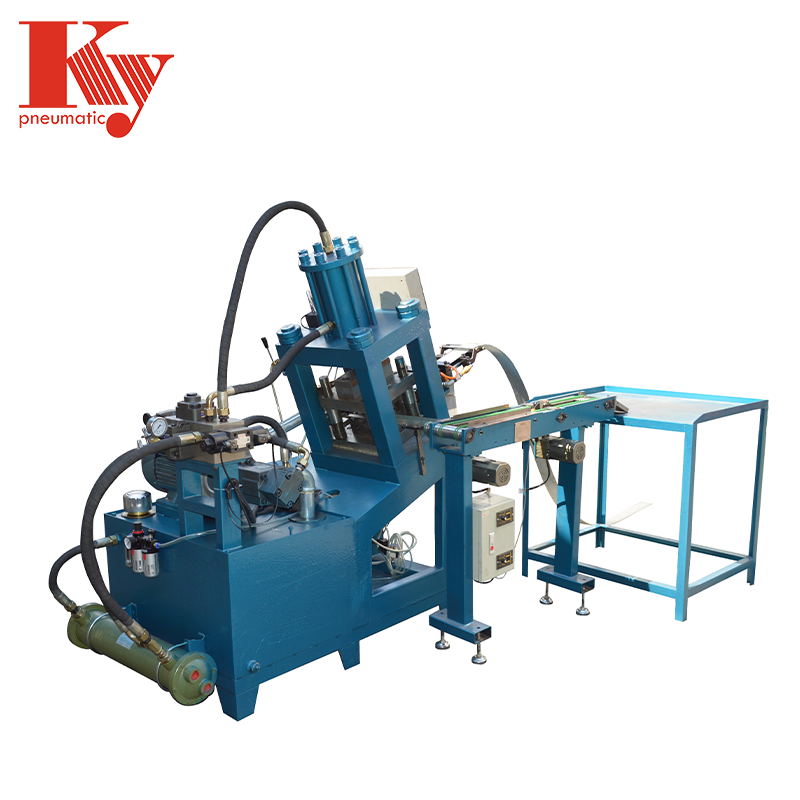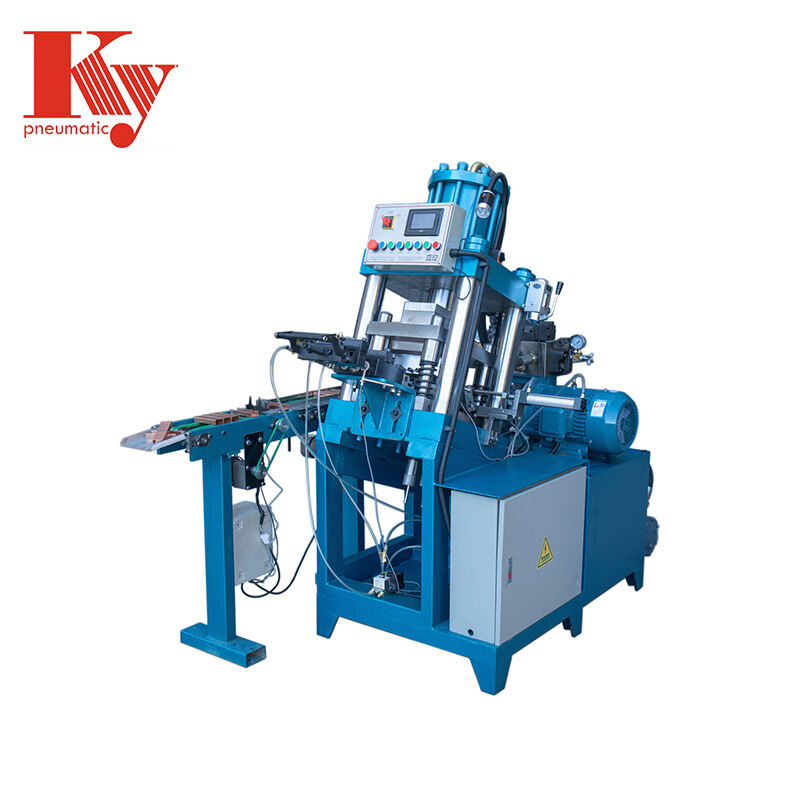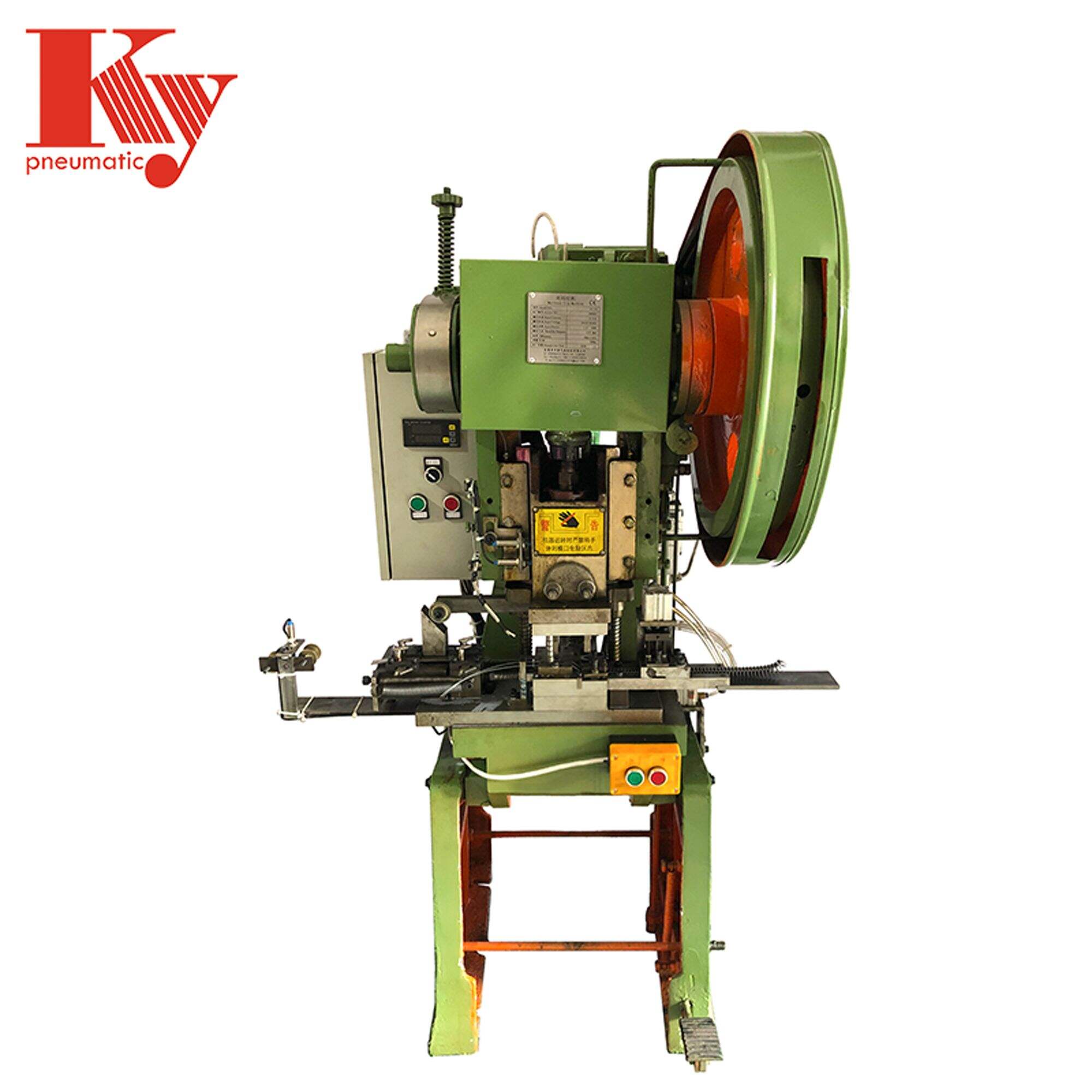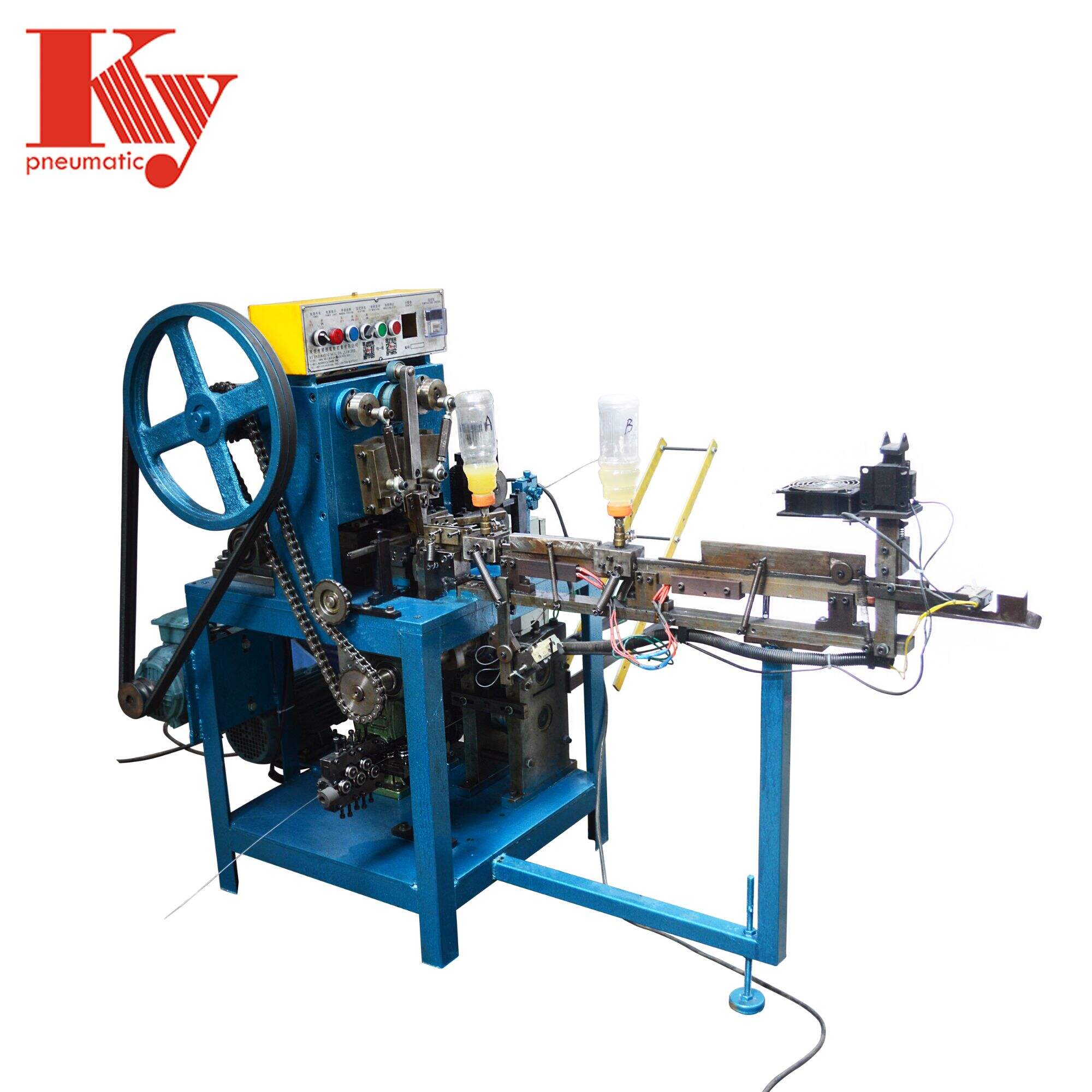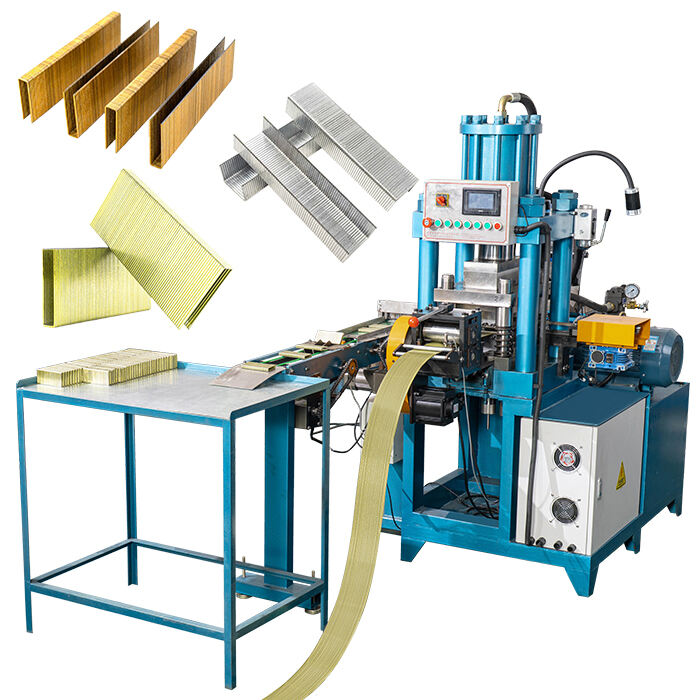Staple making machine: precise and efficient production tool
The Importance of Efficient Staple Making Machines in Manufacturing
Staple making machines that work efficiently play a major role across many manufacturing areas like packaging and furniture production, offering fast ways to attach materials together reliably. Factories rely heavily on these devices when they need to produce large quantities of products with staples, from securing contents inside cardboard boxes to attaching fabric covers on chairs and sofas. The demand for quicker assembly lines and better product quality means staple machines have become indispensable tools in modern manufacturing settings. Their ability to maintain uniformity while speeding up production processes makes them worth their weight in gold for companies looking to stay competitive in today's market.
Staple making machines are built for speed while still maintaining good quality output. Modern equipment incorporates things like PLC controls and hydraulics to run faster and more reliably than older models. Take the Automatic Staple Pin Making Machine for instance it works much better than traditional setups. The newer machines don't require those heavy duty punch presses anymore. This change makes the workplace safer overall, cuts down on all that loud machinery noise, and generally just performs better day after day on the factory floor.
Adding automation to staple making equipment really boosts manufacturing efficiency because it cuts down on labor expenses and reduces mistakes made by people. With automated systems running the show, production can go nonstop without needing much hands-on work from staff, which keeps everything moving smoothly day after day. For factory owners, this means they have more time and resources to expand their operations while still keeping up those strict quality controls that customers expect. The bottom line? Better profits and happier clients who get consistent products every time they place an order. These automated staples makers are becoming essential tools for streamlining production lines in many different sectors of manufacturing today.
Key Features of Efficient Staple Making Machines
Modern staple making machines rely heavily on precision and control to produce staples that meet exact specifications every time. The tech inside these machines has gotten pretty sophisticated over the years, something that matters a lot for industries where even small variations count, think furniture assembly or building construction projects. When manufacturers invest in this kind of precision tech, they end up with staples that look and perform exactly the same batch after batch. This consistency helps them pass those tough quality checks while also saving money in the long run because there's less waste and rework needed throughout their production process.
The noise level of staple making machines matters a lot too since it affects how pleasant the factory floor actually is to work on. Keeping noise within acceptable limits isn't just good practice but legally required under most workplace safety standards these days. Many newer models come equipped with special materials or design elements that absorb some of the racket during operation. Factories report fewer complaints when their equipment runs quietly, and workers generally stay focused longer without getting distracted by constant machine noise. Plus, reduced exposure to loud sounds means lower risk of hearing problems down the road for those operating these machines day after day.
These efficient machines really cut down on operational costs because they consume less energy while producing more goods. When manufacturers focus on getting the most out of their electricity usage, they see lower utility bills at the same time as ramping up what gets produced each day. Machines that work well basically save money over time, which means better profits for businesses in the long haul. Take the J Series Staple Making Machine for example it can churn out around 1000 kg per day and does so without guzzling power like older models did. Companies that invest in such equipment often find themselves saving thousands annually just from reduced energy expenses alone.
The numbers don't lie when it comes to staple making machines streamlining large scale production while cutting down on what companies spend to keep running. According to various studies, newer models of these machines cut labor expenses around 30 percent because they handle so much automatically. People make mistakes less often and things get done faster overall. Investing in these modern staples isn't solely about saving money right away though. There's something bigger at play here too regarding environmental impact and keeping ahead of competitors in today's marketplace. Factories that upgrade their equipment regularly tend to stay relevant longer than those stuck using outdated technology from decades past.
Types of Staple Making Machines
There are several different kinds of staple making machines out there, built specifically for certain industries and what they need. The fine wire models work best when something needs really careful fastening without tearing anything apart. Think about textile manufacturing where fabrics might get damaged easily, or even in electronics assembly where components can be super fragile. What makes these particular machines stand out is how they're configured differently from standard ones. They have smaller parts and tighter tolerances which means less chance of messing up whatever material goes through them during production runs.
In industries like packaging, carton closing staple making machines are indispensable. These machines are robust, designed to handle high-volume operations, and ensure secure sealing of boxes and containers. Their sturdy construction is ideal for heavy-duty applications, making them essential in logistics and distribution centers.
Mattress clip staple making machines focus on the bedding industry. They are tailored to produce clips efficiently, ensuring quick assembly and quality durability in mattresses. These machines enhance productivity and ensure consistency in output, supporting mass production lines.
For applications that require heavy-duty fastening, high carbon steel staple making machines are highly suitable. Known for their durability, these machines can handle tough materials due to the strength imparted by the carbon steel. They ensure reliable performance in demanding environments, such as construction.
Servo feeding staple making machines incorporate automation to boost productivity. With their advanced technology, these machines offer improved speed and accuracy, reducing manual input and errors. This automation translates to superior efficiency in staple production, catering to industries needing rapid throughput without compromising on quality.
Advantages of Using an Efficient Staple Making Machine
Using an efficient staple making machine brings real advantages, mainly because it boosts production speeds so much faster than traditional methods. When companies streamline their manufacturing through these machines, they actually see big improvements across their entire supply chain network. Products get to stores on time more often, which keeps shelves stocked when customers need them most. The ability to crank out staples at such high volumes means manufacturers stay ahead of competitors who might otherwise catch up. Take furniture makers for example many have seen their output jump around 30% after installing modern stapling equipment according to some industry reports from last year. These kinds of gains make all the difference in maintaining consistent quality while meeting growing demand without breaking a sweat.
Cost efficiency remains one of the big wins here, mostly because it cuts down both labor expenses and material waste. When factories automate their processes, they naturally need fewer workers on hand, which brings down those ongoing operational costs. At the same time, these automated systems tend to use materials much more efficiently than humans ever could. Take packaging lines for instance many facilities now use specialized stapling machines that dramatically cut back on wasted wire. These machines make each staple just right, so there's hardly any leftover material going to waste. Textile manufacturers have actually seen some impressive results from this approach. Some major players in fabric production reported saving around 25% on their raw material bills after switching to these smarter manufacturing setups, according to recent findings shared in the Journal of Industrial Manufacturing.
Better product quality comes from using advanced staple making equipment, since these machines produce staples with much greater precision. When staples are made consistently well, customers tend to be happier with their purchases and send fewer items back for replacement. Reliable machines cut down on mistakes, so what gets delivered to customers is generally uniform across the board. According to recent market research, companies that have upgraded to newer models often see around a 15 percent boost in how satisfied their clients are with the products they receive. This matters because happy customers mean fewer complaints and less waste overall for the business.
Industry experts back up what the numbers already show when comparing modern machines to old school methods. Take staple pin production for instance most recent studies point to these new machines running around 85 to 90 percent efficient against the outdated equipment still in some workshops. The real benefit here goes beyond just faster production times. Manufacturers who upgrade typically see their bottom lines improve over time because they're able to produce higher quality pins while spending less on materials and labor. Speed matters too obviously nobody wants to wait weeks for an order when competitors can turn things around in days now.
Exploring Different Models of Staple Making Machines
What makes the fine wire staple making machine so special? Its precision workmanship combined with remarkable versatility across different manufacturing needs. Industries that need consistent quality staples rely heavily on this type of machinery. These machines come packed with smart tech features including PLC controls and long reach conveyors that automate most tasks, cutting down on hands-on work. The inclusion of hydraulic systems gives operators peace of mind too. Machines run smoother and quieter than older models, which matters a lot when running multiple shifts in tight spaces. Packaging plants and office supply manufacturers particularly appreciate how these machines maintain steady output without breaking a sweat through the day.
In the world of packaging machinery, the 32/35/34 Carton Closing Staple Maker has carved out quite a niche thanks to how dependable it actually is day after day on factory floors. Factory workers consistently mention in their feedback that this machine really cuts down on back pain from repetitive tasks while getting boxes sealed much faster than manual methods ever could. The automatic arrangement system means fewer mistakes during rush hours when production lines are running at full tilt. Designed specifically for making those little metal staples that hold cartons together, this model manages to keep up impressive speeds without sacrificing too much on quality control aspects that matter most to manufacturers concerned about both cost savings and consistent output across shifts.
The mattress clip staple maker comes packed with modern tech features, though operators often mention certain hiccups during day to day use. The feeding mechanism works pretty well and doesn't guzzle power, but many new users struggle with getting everything set up right at first. Still, what sets this machine apart is how precise it gets when making those molds, plus the parts last forever because they're built tough. Most manufacturers stick with it despite the learning curve since it keeps producing those strong staples needed for all sorts of mattress construction jobs without missing a beat most of the time.
The high carbon steel construction makes these staple making machines, particularly models like the 4K series, extremely durable over time. Factory workers report that they last years longer than other models on the market while needing almost no upkeep whatsover. That's why so many furniture manufacturers stick with them when producing those heavy duty staples required for solid wood joinery. The machine comes equipped with some pretty neat features too. Automatic straightening ensures every staple comes out looking identical, and the built-in nail cutter saves hours of tedious hand work during production runs. Most operators agree these functions really cut down on downtime compared to older models where constant adjustments were necessary throughout shifts.
Servo feeding staple makers are really changing the game in today's factories. These machines don't need compressed air anymore thanks to their new tech, which means they run much quieter and use less electricity overall. Factory workers love how simple they are to operate too. The touch screen interface makes adjusting settings straightforward even for newer staff members, and this ease translates into fewer mistakes when producing thousands of staples per hour. Some plants report cutting down on maintenance costs by over 30% since switching to these models.
Collectively, these machines reflect the industry's shift towards technologically advanced, efficient, and user-friendly production methods that cater to specific industrial needs, ensuring sustainable and high-quality staple manufacturing.
Future Trends in Staple Making Technology
Smart tech like IoT sensors and automation systems is changing how staple making machines work, making them run better day to day. With these new systems comes all sorts of improvements including watching machine performance live, predicting when parts might fail before they actually do, and making automatic tweaks without human intervention. All this means fewer unexpected stoppages and more stuff getting made each shift. The push toward automation makes sense for manufacturers looking to cut corners on expenses while still keeping quality high. Staple producers who adopt these technologies often see their bottom lines improve alongside product consistency across batches.
Furthermore, sustainability practices are becoming increasingly vital in staple making, with the industry shifting towards eco-friendly materials and processes. Manufacturers are investing in renewable resources and recyclable materials to minimize environmental impact. This movement addresses consumer demand for greener products and aligns with global sustainability goals.
The market seems to be shifting toward innovative staples these days, which has got manufacturers scrambling to stay ahead of the game. According to various industry reports, there's been quite a jump in demand for specialty staples made specifically for certain sectors like cars and home furnishings. To keep up with what customers want now, companies are looking into different materials and manufacturing methods. They're trying to come out with staples that can handle tougher jobs while still being versatile enough for multiple applications across different markets.
 EN
EN
 AR
AR
 BG
BG
 CS
CS
 FI
FI
 FR
FR
 DE
DE
 EL
EL
 HI
HI
 IT
IT
 JA
JA
 KO
KO
 PL
PL
 PT
PT
 RU
RU
 ES
ES
 TL
TL
 ID
ID
 LT
LT
 SR
SR
 UK
UK
 VI
VI
 SQ
SQ
 GL
GL
 HU
HU
 MT
MT
 TH
TH
 TR
TR
 AF
AF
 MS
MS
 AZ
AZ
 KA
KA
 BN
BN
 LO
LO
 LA
LA
 MI
MI
 MN
MN
 NE
NE
 KK
KK
 UZ
UZ


